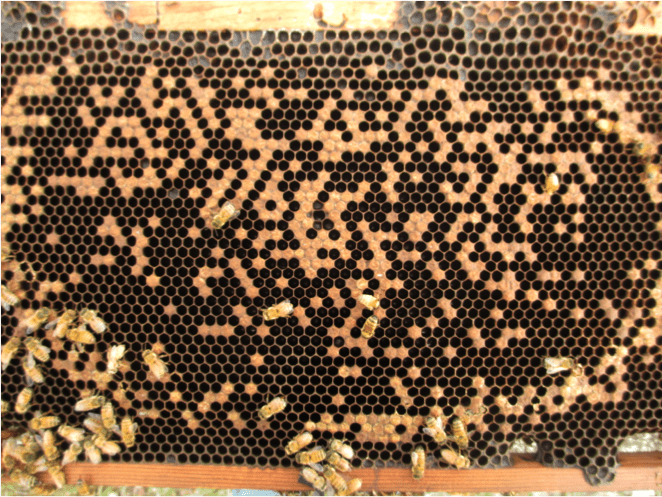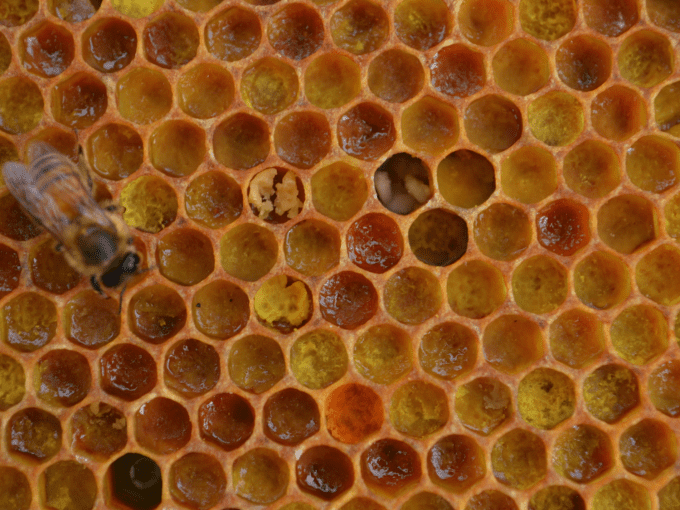The purpose of a hive assessment is give you a idea of what is going on in the colony and to see if you need to do any type of management. Taking notes on the results of the hive assessments helps you remember what the colony looked like on a specific date.
I gave a talk at the Eastern Apiculture Society last week where I talked about performing hive assessments and taking notes. I showed a general checklist that people expressed interest in, so I am posting it here. Here is the checklist of what I look for and record.
Yard information:
- Date
- Name of location and GPS coordinates
- Layout of colonies: where they are placed)
- Weather
Colony information:
- Colony name: name your colonies to help you keep track of them.
- Colony configuration: how many boxes and the size of boxes, eg. 2 deep boxes and 3 honey supers.

Three colonies with different configurations: 1 deep, 3 deeps, and 2 deeps and 4 supers (left to right). - Colony strength: How many frames are completely covered by bees? How many frames have brood?
- Queen status: Did you see the queen? Eggs? Young larvae? You do not need to see the queen if you see eggs. To look for eggs, have your back against the sun to get the best light in the cell. Do you see any queen cells and do they have an egg, larva, or pupa inside?
- Brood pattern: Look at the older sealed brood. Is the pattern solid or spotty? Spotty brood can indicate disease, poor nutrition, a failing queen, or sometimes there is simply pollen or nectar in the brood nest that makes the pattern look spotty. We rate brood pattern on a 1-5 scale (with 1 being poor and 5 being excellent). Rating on a good, fair, poor system works as well – the key is to distinguish the outliers.
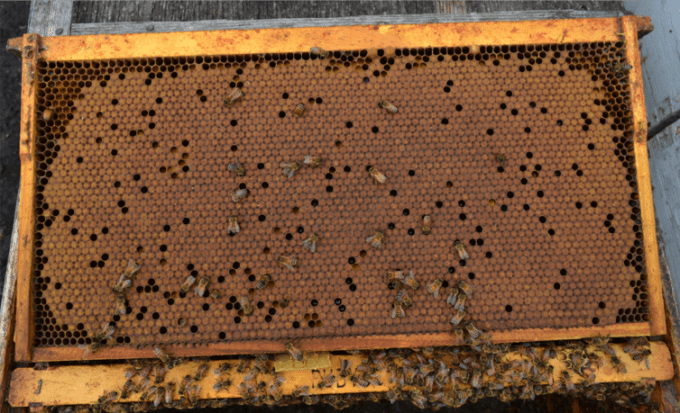
Good brood patter = 5 - Brood amount: how much open compared to sealed brood is there? Be aware if you see much higher quantities of sealed or open brood. The ideal in summer is about 55% sealed brood and 45% open brood. Lots of young brood and not much sealed could indicate that you have a new queen. Do the bees cover the brood? Too few bees could indicate that the adult bee population declined (due to death, swarming, etc.) or that they are building and vulnerable, especially to cold.
- Nutrition: Are the larvae well fed? Are the young larvae swimming in a pool of brood food? If not, it could be an indication of poor nutrition in the colony.
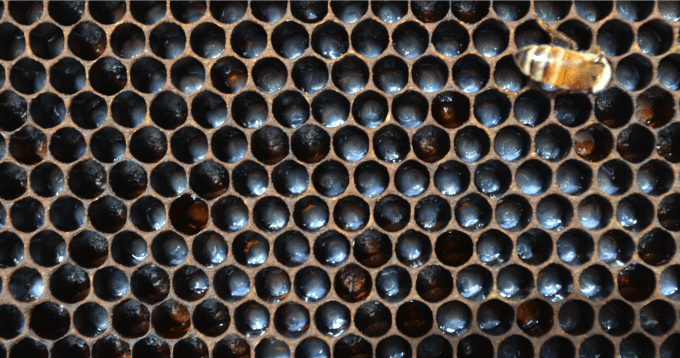
Larvae that are well fed and swimming in a pool of brood food (the whitish, shiny liquid at the bottom of the cells). - Pollen stores: Do the bees have multi-colored pollen stored in the cells around the brood nest? Lots of multi-colored pollen indicates that they have good pollen stores and a variety of colors indicates a diverse and healthy diet.
- Nectar/honey stores: Do the bees have nectar or honey around the brood nest? On the outside frames? Nectar or honey around the brood area tends to indicate that the bees have okay nectar stores.
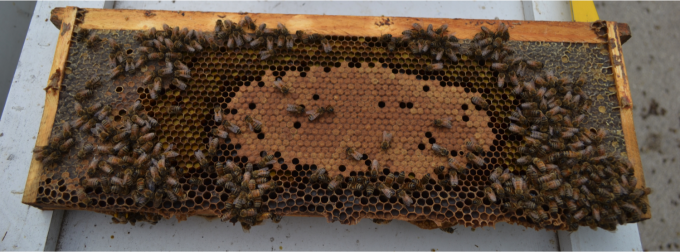
Frame with rainbow of honey (outside), nectar (middle), and brood (inside). - Diseased larvae: Are the larvae pearly white, shiny, and regular C-shaped (healthy)? Or are they discolored or sunken into the cell (un-healthy)? We look for European Foulbrood.
- Sealed brood disease: If there is a spotty brood pattern, can you tell why? Are the bees removing pupae, or are there cells with dead brood? Can you tell what the symptoms are (like the color and shape, any smell, the age of the affected brood)? We look for Parasitic Mite Syndrome, American Foulbrood, Chalkbrood, and Sacbrood Virus.
- Varroa signs: Do you see any adult bees with wrinkled, ropey wings? This is a sign of Deformed Wing Virus and may indicate you have a high mite level. Do you see any mites on the backs of bees or in the drone brood as you separate boxes and crack the brood open? These can also indicate high mite levels, however be sure to sample to quantify the mite level.
- Other pests: Do you see any other organisms in the colony? Moths, beetles, larvae? If you don’t know what it is, take a sample in alcohol or on ice to identify later.
It always helps to have a camera on hand to document anything you have questions about or to document the health of a hive.
Keep in mind that bees don’t always do what they are supposed to do. The above are guidelines. Many factors contribute to what we see in a hive inspection, including pesticides, viruses, Varroa, poor nutrition, and time of year. Bees are complex and many things can go on in the hive that we don’t see.
